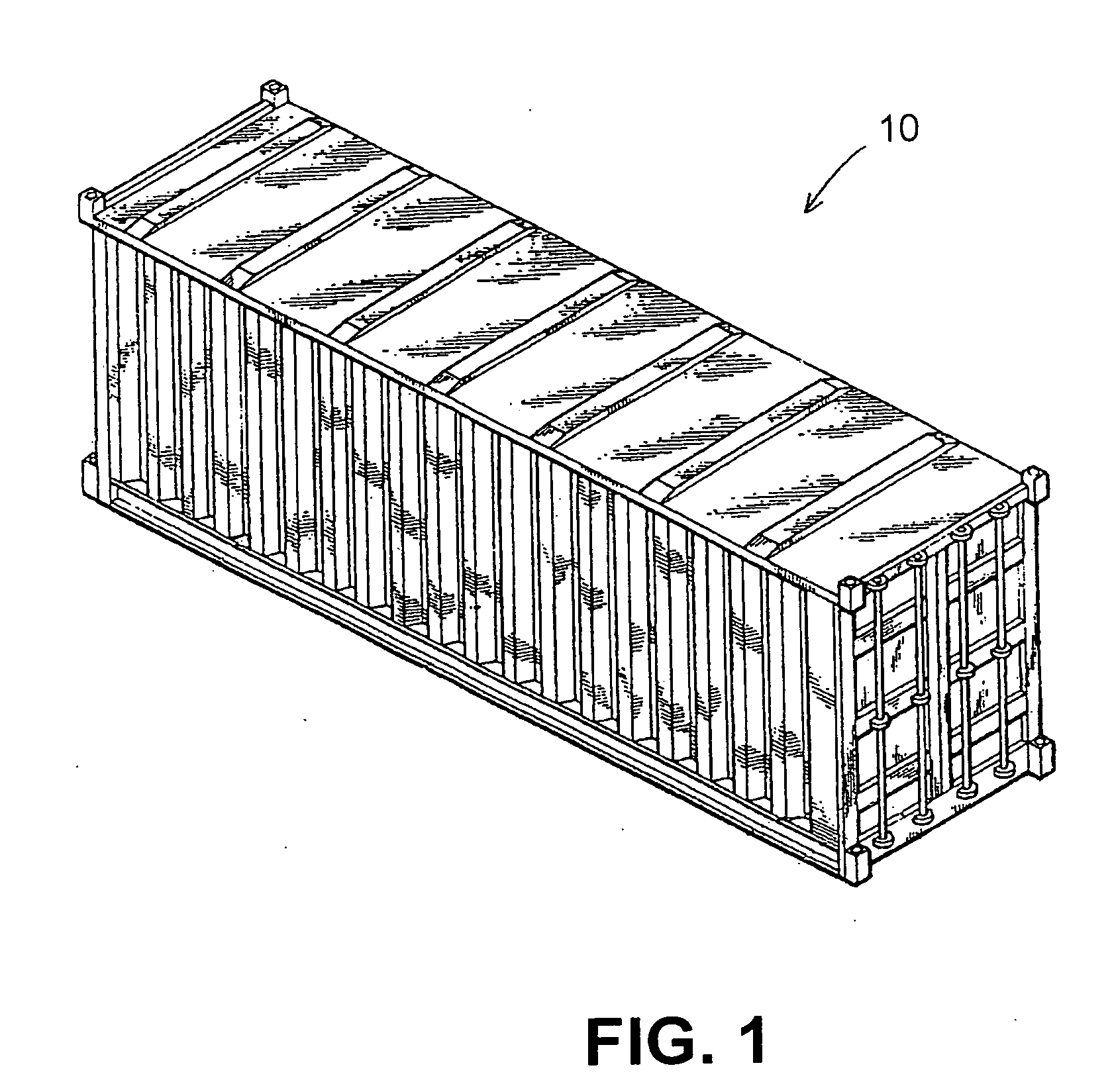Building communities, and communities so built
a technology for building communities and communities, applied in protective buildings/shelters, special buildings, parks, etc., can solve the problems of large number of people, long lead times, and substantial quantities of custom made equipmen
- Summary
- Abstract
- Description
- Claims
- Application Information
AI Technical Summary
Benefits of technology
Problems solved by technology
Method used
Image
Examples
Embodiment Construction
[0042]Referring to the FIGURES, an ocean shipping container 10 has external dimensions of typically 40 feet (12.2 meters) long by 8.5 feet (2.6 meters) wide by 8.5 feet (2.6 meters) high, which, when converted to habitation quarters, represents about 340 square feet (31.6 square meters) gross, of living space, with an internal height of about 8 feet (2.4 meters). Thus, the height of the container lends itself well to human habitation. While the square footage of living space is somewhat small by developed world standards, such space represents at least adequate space for temporary housing of people displaced by disaster events.
[0043]FIG. 2 shows that such shipping container can be converted to a habitation unit 12 providing living space 14 for human habitation, including up to 12 single-size bunk beds 16. FIG. 2 shows such habitation unit with the near side wall and the top wall removed.
[0044]The illustrated living space provides a limited kitchen space 18 for food storage and prepa...
PUM
 Login to View More
Login to View More Abstract
Description
Claims
Application Information
 Login to View More
Login to View More - R&D
- Intellectual Property
- Life Sciences
- Materials
- Tech Scout
- Unparalleled Data Quality
- Higher Quality Content
- 60% Fewer Hallucinations
Browse by: Latest US Patents, China's latest patents, Technical Efficacy Thesaurus, Application Domain, Technology Topic, Popular Technical Reports.
© 2025 PatSnap. All rights reserved.Legal|Privacy policy|Modern Slavery Act Transparency Statement|Sitemap|About US| Contact US: help@patsnap.com



